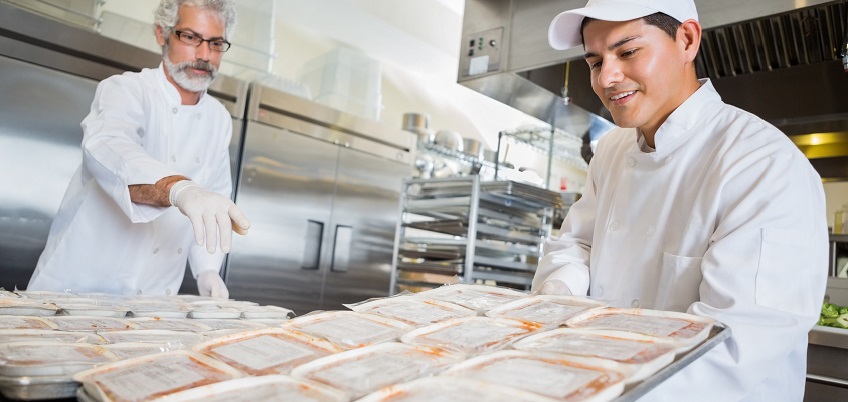Articles
April 20, 2023
Food Code changes make donation easier and effective
Donations done right, following good food safety practices, contribute to communities.

Food donation can reduce the amount of food waste generated in the back of the house and divert waste from landfills.
Recent changes to the 2022 Food Code will help clear barriers for restaurant operators who want to donate food to their communities, the U.S. Food and Drug Administration says.
The agency encourages donating food that’s stored, prepared, packaged, displayed, and labeled according to Food Code rules or local, state, and federal statutes or regulations.
“This information can help us to better understand what can or shouldn’t be donated,” says Patrick Guzzle, the National Restaurant Association’s vice president of Food Science and Safety. “It’s a great addition to the Food Code because it clarifies for operators what’s allowable. Having these provisions in the code will help us maintain the required safety measures that ensure the public health.”
There are many benefits to donating surplus restaurant food to charities, says Laura Abshire, the Association’s director of Food and Sustainability Policy.
“Food donation helps reduce the amount of food waste generated in the back of the house,” she says. “It’s a win-win for everyone. It helps the environment by diverting waste from landfills. It helps the communities we serve and provides an enhanced tax deduction for businesses donating food to nonprofit organizations. It’s a financially sound business decision.”
Operators who plan to donate food from their restaurants can follow these four tips from Association partner Food Donation Connection to meet safety rules and requirements.
The agency encourages donating food that’s stored, prepared, packaged, displayed, and labeled according to Food Code rules or local, state, and federal statutes or regulations.
“This information can help us to better understand what can or shouldn’t be donated,” says Patrick Guzzle, the National Restaurant Association’s vice president of Food Science and Safety. “It’s a great addition to the Food Code because it clarifies for operators what’s allowable. Having these provisions in the code will help us maintain the required safety measures that ensure the public health.”
There are many benefits to donating surplus restaurant food to charities, says Laura Abshire, the Association’s director of Food and Sustainability Policy.
“Food donation helps reduce the amount of food waste generated in the back of the house,” she says. “It’s a win-win for everyone. It helps the environment by diverting waste from landfills. It helps the communities we serve and provides an enhanced tax deduction for businesses donating food to nonprofit organizations. It’s a financially sound business decision.”
Operators who plan to donate food from their restaurants can follow these four tips from Association partner Food Donation Connection to meet safety rules and requirements.
- Observe critical food handling temperatures: Microbial spoilage in food typically happens between the temperatures of 41°F and 135°F. Place donation food in food-safe plastic bags or sanitized, food-safe shallow containers with a product depth of less than 4 in. Immediately refrigerate or freeze the food. It’s critical the temperature of the food reaches 41°F or lower (frozen foods below 32°F) within 4 hours. Food, when reheated, must reach an internal temperature of at least 165°F for 15 seconds. If food is removed from cold storage and not reheated properly within 2 hours, the food must be discarded.
- Labeling: Attach a food donation label to each bag or container that lists the donor’s name and location, a description of the item, and the date and time it was packaged.
- Storage at restaurant or foodservice business: Immediately store perishable foods in the walk-in cooler, refrigerator, or freezer. Again, when storing perishable foods, the temperature of the food must reach 41°F or lower (frozen foods below 32°F) within 4 hours. If you need to cool hot foods before cold storing, it must be cooled from 135˚F to 70˚F within 2 hours, and from 70˚F to 41˚F or lower in the next 4 hours.
- Distribution: Use proper, sanitized storage and transportation containers and approved food-safe plastic bags so the donated food is packaged, stored and transported in a clean and safe manner.